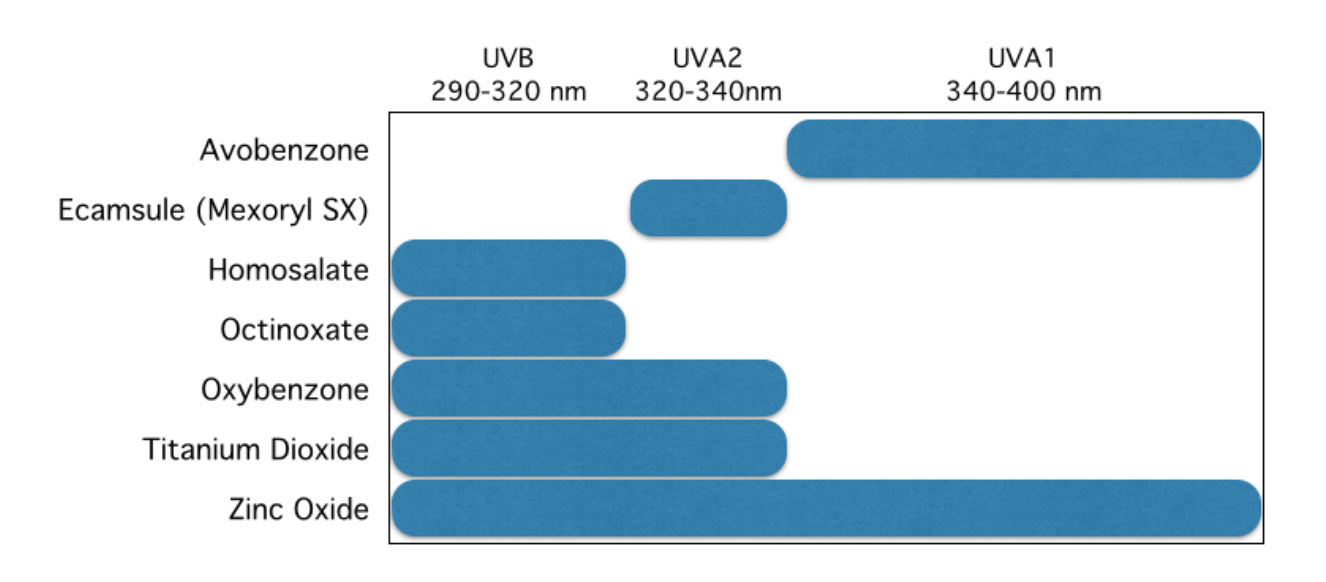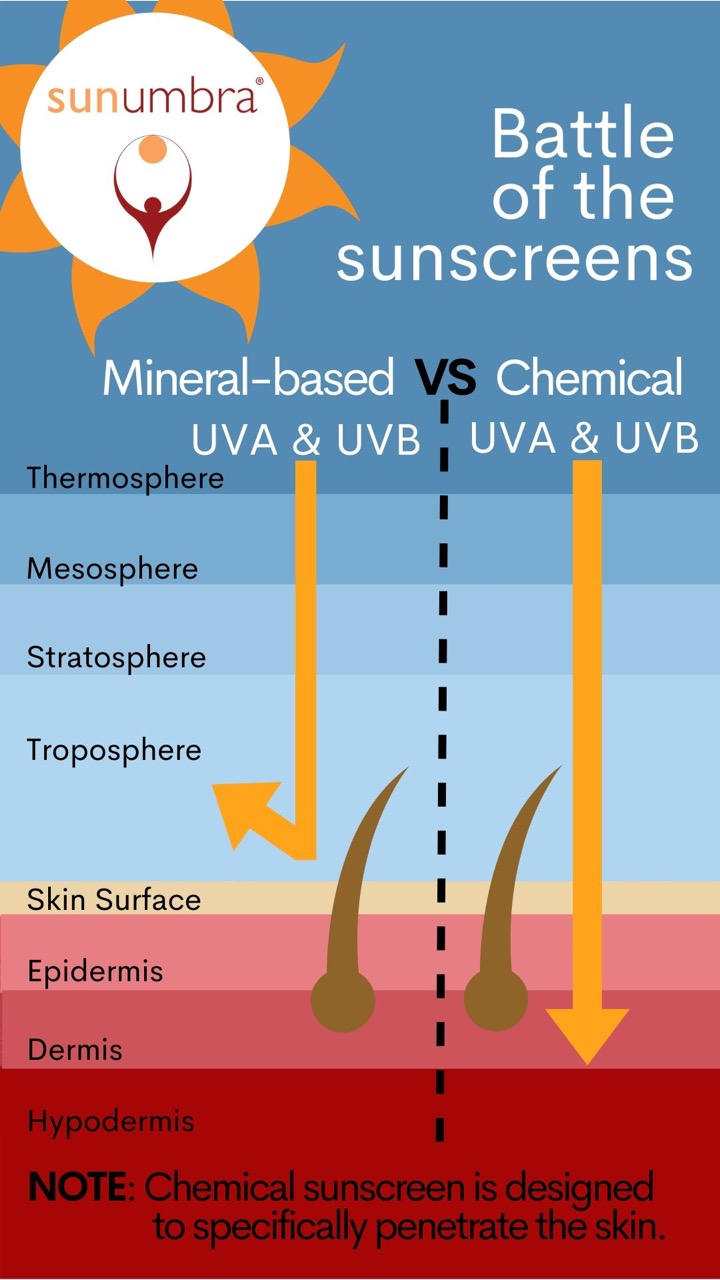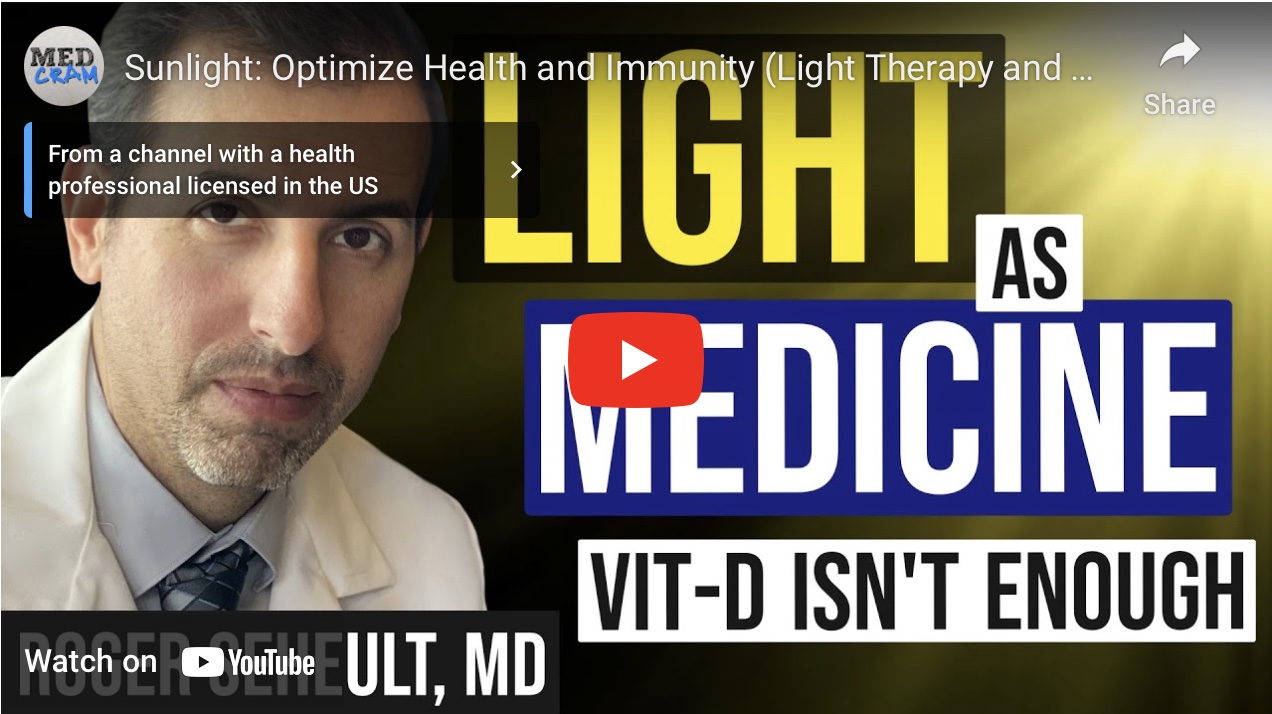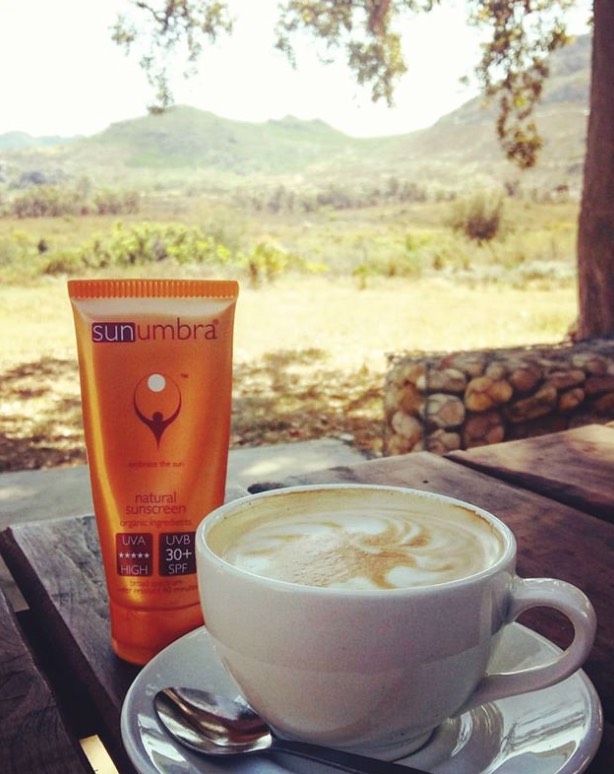Zinc oxide
- Home
- Zinc oxide
Zinc oxide is a natural powdered mineral used in making sunscreens that works by sitting on top of the skin and reflecting, scattering and absorbing the sun's UVA & UVB rays.
All of Sunumbra®'s sunscreen products use a larger particle size zinc oxide (ZnO) with no nano particles. They use no other sunscreen active ingredient.

Of all the approved sunscreen active filter ingredients - approved through the various global legislation bodies - zinc oxide is considered to be the safest and most effective one and does not enter the body through the skin.
The Zinc oxide, (ZnO), we use is a pigment of micronized particle size, as opposed to nano, and is nearly transparent to visible light. This allows for almost no whitening of the skin if the sunscreen is rubbed carefully into the skin, even when used in our higher SPF concentrations.
Due to a special manufacturing process, this compound is pH neutral and does not shift the pH of cosmetic preparations into the alkaline range.
It protects broadly against UVB, UVA I and UVA II, effectively covering radiation up to wavelengths of 380 nm.
Zinc oxide for children
 Zinc Oxide is safe for children
Zinc Oxide is safe for childrenZnO is particularly recommended for daily care and children's products due to its safety profile as well as its healing properties.
Compared to titanium dioxide, it provides additional UVA protection without any potentially harmful effects. Zinc oxide is known for its skin compatibility since it is used as a skin protectant, even for babies in nappy rash creams and such. It has anti-microbial properties and is non toxic.
Also, zinc as a trace mineral in itself, helps maintain collagen and elastin fibres which provide the skin with its firmness, assisting in the prevention of sagging skin and wrinkles.
In addition to this, it links together amino acids that are needed for the formation of the vital collagen.
Potential health risks: Inhalation; Photo-Reactive
 sunscreen spray into the face can be toxic
sunscreen spray into the face can be toxicInhalation
Zinc oxide, presented in sunscreens in a spray or powder format can be a health risk if inhaled.
As sunumbra® products do not manufacture any sprays, nor provide the sunscreen in a powdered format, there are no health risks presented.
Photo-reactive
ZnO is believed to be photo-reactive, meaning that when it is exposed to UV light it can generate Free Radicals, or otherwise known as Reactive Oxygen Species (ROS).
They have the potential to damage living skin cells, but only if the ZnO manages to penetrate the outer dead skin layers to the living skin cells below. Research has shown that ZnO remains on the outer dead skin layer, more especially so if not a nano particle size.
However, we include powerful antioxidants in all of the sunumbra® products to enable any free radicals created to be absorbed, or effectively destroyed.
How does zinc oxide work as a sunscreen?
ZnO occurs in nature as the mineral zincite, which is the metal zinc that has been oxidised, but it is quite rare and commercially unavailable.
The ZnO we use is extracted and purified via a distillation process to a pharmaceutical grade Zinc Oxide.
It is one of the active ingredients approved by organisations across the globe, including the FDA, TGA and COLIPA, for use in sunscreen manufacture.
The sun protection occurs through the ZnO sunscreen particles sitting on the outermost layer of your skin, the stratum corneum or dead skin, where they reflect and scatter the ultraviolet rays, protecting the living skin layers below.
Zinc Oxide is the most broad of all the sunscreen ingredients on these approved lists, as it protects you from UVA I and UVA II as well as UVB rays.
Titanium Dioxide is the only other mineral based active ingredient that has been approved. It is the most opaque of the 2, also reflecting the UV rays, but is not at all as efficient with UVA spectrum protection.
How is zinc oxide different from other chemical sunscreens?
Effectively, like water (H2O), zinc oxide has a chemical formula.
When claiming that a sunscreen is 'chemical free', it refers more to the fact that it is free of synthetic chemicals with complex formulas including chemicals such as:
- octocrylene (C24H27NO2)
- oxybenzone (C14H12O3)
- octyl methoxycinnamate (C18H26O3)
- benzophenone (C13H10O)
The potential toxic effects of these chemical sunscreens when they enter the body through the skin, is of great concern to many people.
They work specifically by penetrating the skin.
ZnO is far more expensive to use than these chemical actives and is required in a greater percentage within the formulas.
However, as the healthiest option, we believe it is by far and away the best choice available.
Have a question yourself?
Do you have a question or perhaps wish to make a comment or even tell a story about an experience with sunscreen? Please share it! Others will benefit and may join the conversation.








